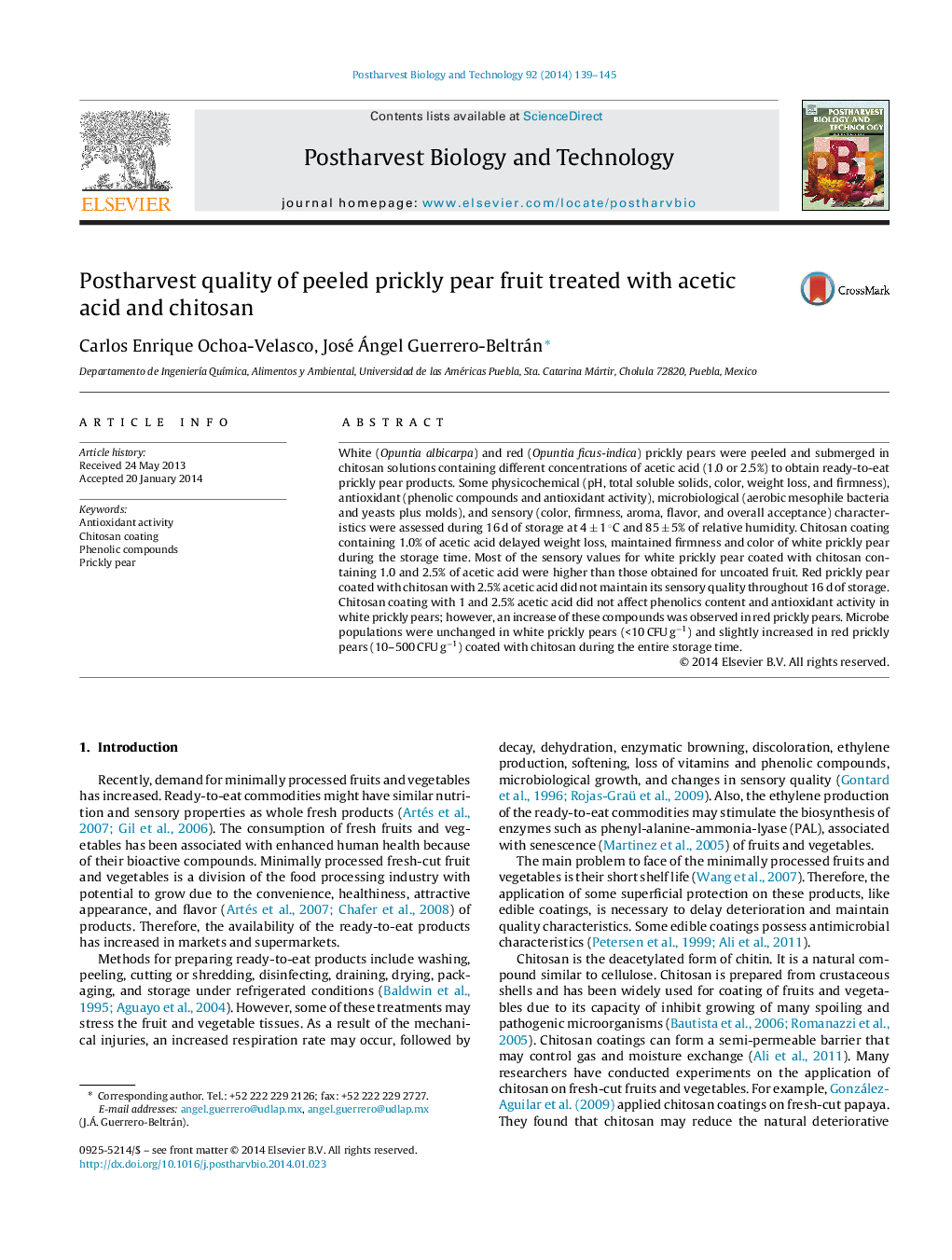| Article ID | Journal | Published Year | Pages | File Type |
|---|---|---|---|---|
| 4518225 | Postharvest Biology and Technology | 2014 | 7 Pages |
•Color of white prickly pear coated with chitosan did not change in storage.•Both types of prickly pears coated with chitosan had extended shelf life in storage.•Bioactive compounds in red prickly pear increased in storage.•Bioactive compounds in white prickly pear were only slightly affected in storage.•Stored white prickly pear treated with chitosan retained an attractive appearance.
White (Opuntia albicarpa) and red (Opuntia ficus-indica) prickly pears were peeled and submerged in chitosan solutions containing different concentrations of acetic acid (1.0 or 2.5%) to obtain ready-to-eat prickly pear products. Some physicochemical (pH, total soluble solids, color, weight loss, and firmness), antioxidant (phenolic compounds and antioxidant activity), microbiological (aerobic mesophile bacteria and yeasts plus molds), and sensory (color, firmness, aroma, flavor, and overall acceptance) characteristics were assessed during 16 d of storage at 4 ± 1 °C and 85 ± 5% of relative humidity. Chitosan coating containing 1.0% of acetic acid delayed weight loss, maintained firmness and color of white prickly pear during the storage time. Most of the sensory values for white prickly pear coated with chitosan containing 1.0 and 2.5% of acetic acid were higher than those obtained for uncoated fruit. Red prickly pear coated with chitosan with 2.5% acetic acid did not maintain its sensory quality throughout 16 d of storage. Chitosan coating with 1 and 2.5% acetic acid did not affect phenolics content and antioxidant activity in white prickly pears; however, an increase of these compounds was observed in red prickly pears. Microbe populations were unchanged in white prickly pears (<10 CFU g−1) and slightly increased in red prickly pears (10–500 CFU g−1) coated with chitosan during the entire storage time.
